by The Prairie Enthusiasts | Mar 13, 2020 | News
The Annual TPE Prairie Conference came and went without a hitch. As usual, there were a lot of moving pieces that fit together into a working harmony. Like with any natural prairie community, we needed the elements to come together, and they did. Looking back, it was a close call. Large groups on a college campus are presently a thing of the past. You can look back here and feel assured that TPE is in synch with the environment.
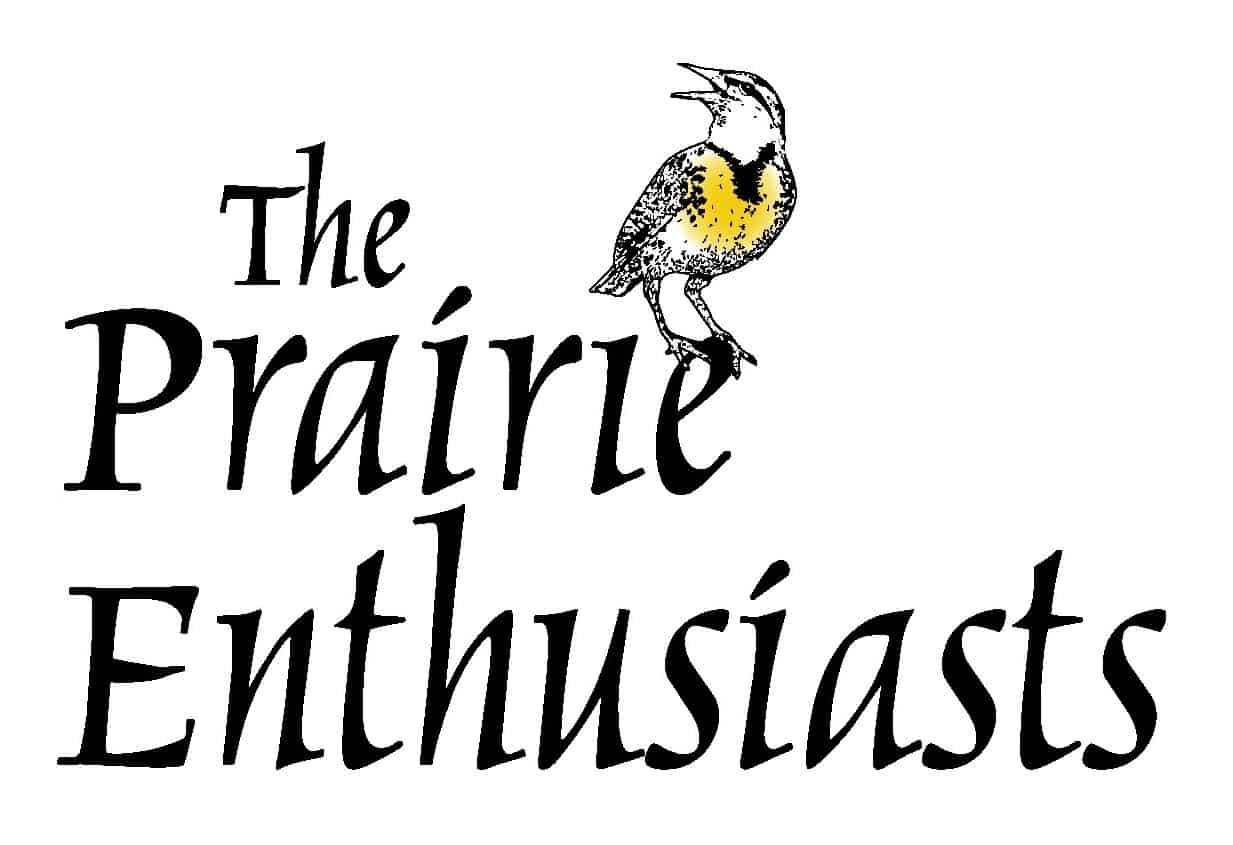
by The Prairie Enthusiasts | Mar 13, 2020 | News
It is with mixed emotions that we report on March 1 the TPE Board of Directors decided to begin a nationwide search for a new Executive Director to replace Chris Kirkpatrick. Chris has graciously agreed to work with us on the transition process until March 31. The Executive Committee of the Board (Jerry Newman, Alice Mirk, Jim Rogala, and me) is selecting a search consultant and will oversee the process (with the help of a few other members) as a Transition Task Force until a new Executive Director begins work. The Executive Committee has asked me to assume the additional role of Acting Executive Director to manage the staff and operations of TPE during the transition, and I have accepted that task.
This was not an easy decision, nor was it taken lightly. Chris has served TPE as Executive Director for nearly 8 years, and during that time has overseen a major transformation of the organization. Our professional staff, while still quite small, has grown significantly. We have put in place a very strong financial management infrastructure. Our outreach and communications efforts have also grown significantly, resulting in a significant increase in both contacts and new members, as well as a much stronger public profile. Chris also directly led the process of achieving accreditation by the Land Trust Alliance, which has greatly improved our land protection processes. The land we protect by ownership or easement has grown from 2,500 to 4,000 acres. We give Chris thanks for all his many efforts during his tenure and wish him well in his future endeavors.
The primary driver for making this leadership change is a set of exciting new opportunities and challenges that are emerging for TPE. As many of you are aware, we have received a major three-year grant from the National Fish and Wildlife Foundation (NFWF) to develop a new program of direct outreach and services to private working and recreational landowners for pollinator habitat restoration and improvement. We are hiring a new, full-time Landowner Services Coordinator to provide ecological assessments to landowners, to help develop management plans, and to assist landowners obtaining the funding, professional resources and appropriate seeds needed for selected projects.
The NFWF grant also funds half a staff position to develop and execute a program of outreach targeted at building interest among landowners in pollinator habitat projects. The Board decided to supplement that funding and hire a new full-time staff member to work with the rest of the staff and chapter leadership on integrated outreach, development, and services program for both landowner outreach and building the general membership and volunteer engagement in the chapters. We will have more about these new staff positions and strategic directions in future blog postings.
On a personal note, I am both excited and more than a bit daunted by the challenge of assuming a new, expanded role in the leadership of TPE during this important transition. Having just finished visiting all eleven of our chapters since the first of the year and discussed these opportunities and changes with many of you in considerable depth, I am deeply impressed by the engagement and thoughtfulness of the leaders and members across the organization. There is a strong sense of hope and even optimism about our future, but there is also a very realistic and well-considered understanding of the significant challenges we will face. I do feel very well supported by the Board, staff, chapter leadership and our members, and ask for all your help in working together through this transition process.
As always, please let me know what you think at president@ThePrairieEnthusiasts.org.
Scott Fulton, President and Acting Executive Director

by The Prairie Enthusiasts | Mar 13, 2020 | News
Nearly 260 prairie enthusiasts gathered Feb. 29 on a beautiful leap-year day at UW-Platteville campus for the 32nd annual TPE Conference and Banquet.
Hosted by the Southwest and Prairie Bluff chapters, with coordination by Chapter Support staff, the team gained access to the building at 6:30 a.m. and scrambled to open for continental breakfast, raffle ticket sale and silent auction displays by 8 a.m.
The keynote address, “Following Flames from Prairie Bluffs to Backwater Pines,” by Dr. Lytton John Musselman, Professor of Botany at Virginia’s Old Dominion University in Norfolk, peppered humor and research as he compared Midwest prairies and savannas with Virginia’s long-leaf pine ecosystem. Both are fire dependent.
Breakout sessions followed in the morning and after lunch. Attendees had three options each hour. Topics included control of invasives, building conservation communities, turtles, timber rattlesnakes and more. In the afternoon, participants had a choice of panel discussions: “Common problems and solutions among conservation organizations,” and “Planting seeds: Using programs and social media to foster a love of prairies among all generations.”
Everyone appreciated the live music of John Peterson during lunch.
Time was allotted for socializing, exploring exhibits, bidding on silent auction items, and strategically spreading raffle tickets among dozens and dozens of items. According to Evanne Hunt, Board member, the silent auction brought in $3,469, the raffle $2,832, with a grand total of $6,301 to be shared among host chapters.
The banquet dinner included pasta bar followed by the popular chocolate fountain. In the evening, a representative from each chapter gave a brief account of it activities for the 32nd Annual Conference & Banquet year. Executive Director Chris Kirkpatrick spoke to the group about the new initiatives TPE plans with a US Wildlife Services grant of $245,000. He also described the new capabilities of the recently acquired NationBuilder computer program.
The winner of this year’s photo contest was Sue Steinmann’s
“The Beauty of the Burn.”

The Conference Haiku challenge winner was Madison Belland with:
They speak, I listen
A strong voice for the voiceless
“Restoryation”
Volunteers were honored through the night’s program. Three chapters awarded “Volunteers of the Year” – EmpireSauk chose Ron Endres, Minnesota Driftless honored Gabe Erickson, and Southwest celebrated Martha and Steve Querin-Schultz.
Awards continued with overall TPE Chapter Volunteer of the Year Award given to Sue Steinmann and Bill Weege for their tireless work in protecting the Rattlesnake Ridge Preserve. The program ended with Gary Eldred surprising Scott Fulton with a Jonathan Wilde original painting in appreciation of his extraordinary service to the organization during his tenure as Board President.
John Peterson performed beautifully on the guitar and mandolin during lunch. (Photos by Jerry Newman)

Keynote speaker Dr. Lytton John Musselman, professor of botany at Old Dominion University, Norfolk, Va.
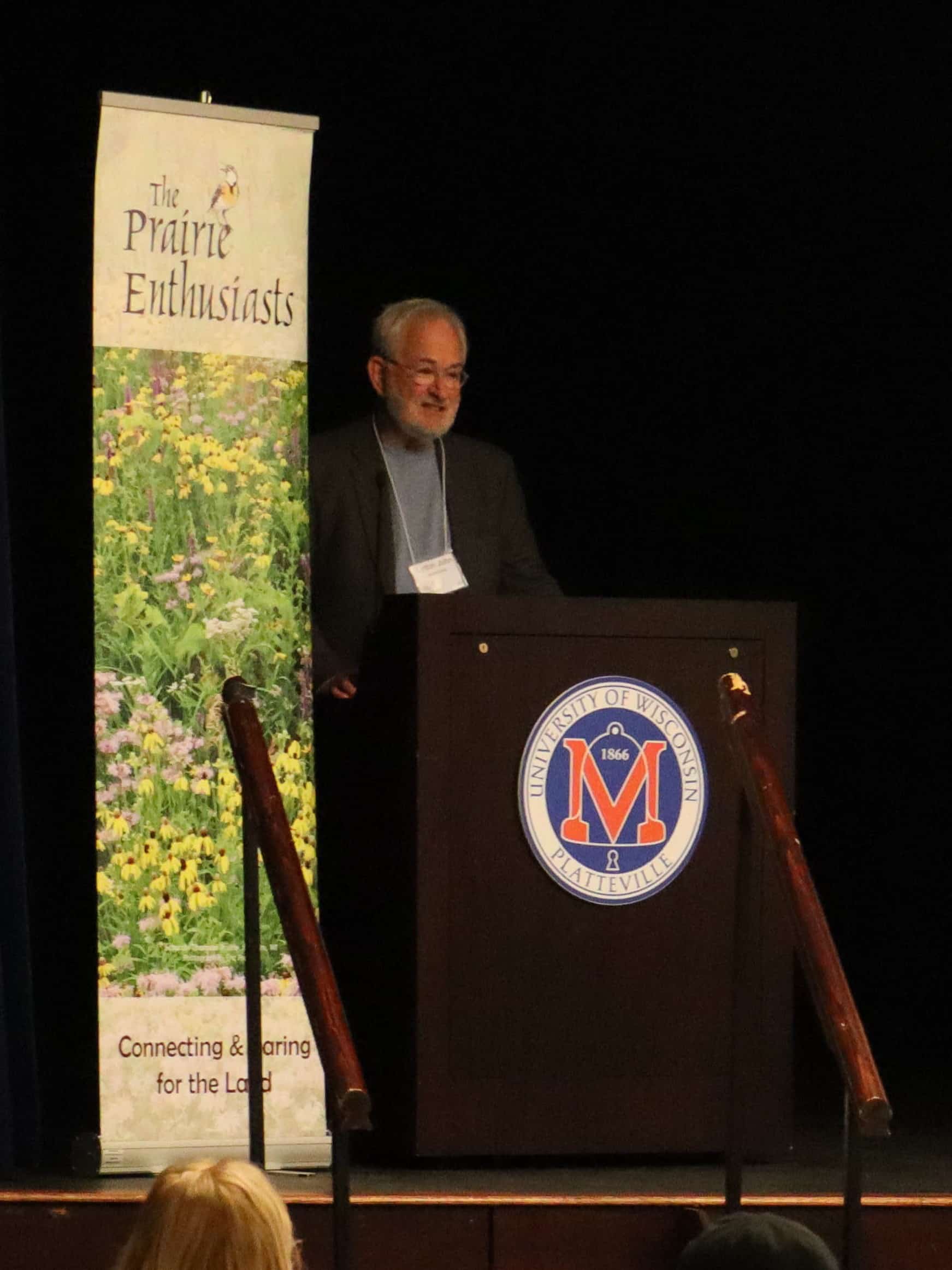
Greg Schmidt, private lands’ biologist with Iowa DNR, presents on the timber rattlesnake.

Board President Scott Fulton presents TPE Chapter Volunteer of the Year Award to Sue Steinmann (and Bill Weege, not pictured) for their work protecting the Rattlesnake Ridge Preserve.


by The Prairie Enthusiasts | Dec 4, 2019 | News
By Pam Richards
Last summer a variety of prairies were discovered at Lake Carroll – a four-season recreational community between Lanark and Pearl City, Ill. Carroll County is the southern-most region of the TPE-monitored areas. These finds included a remnant, a planted prairie, and golf course prairies. Both the remnant and planted prairies were featured in two local news mediums.
Becky Janopoulos, along with Jim and Pam Richards, Lake Carroll residents and Northwest Illinois Prairie Enthusiasts (NIPE) members, noticed eight acres of prairie remnant on both sides of an established ATV trail where Jim Richards found a unique plant later identified by Jim Rachuy as the short green milkweed with a conservation value of 10 (Wilhelm & Rericha, 2017).
 In the fall, Jim and Rickie Rachuy planted the seed from the one green milkweed pod in their rare species garden and grew 24 seedlings. Then Duane Ambroz, Illinois Department of Natural Resources (IDNR) heritage biologist, visited this remnant twice and determined it to be a grade three abandoned pasture/gravel hill remnant prairie. He found two types of Spiranthes orchids or lady’s tresses during his visits and since then, we have identified 30 grasses and forbs at that location.
In the fall, Jim and Rickie Rachuy planted the seed from the one green milkweed pod in their rare species garden and grew 24 seedlings. Then Duane Ambroz, Illinois Department of Natural Resources (IDNR) heritage biologist, visited this remnant twice and determined it to be a grade three abandoned pasture/gravel hill remnant prairie. He found two types of Spiranthes orchids or lady’s tresses during his visits and since then, we have identified 30 grasses and forbs at that location.
At the same time, we investigated another seven-acre prairie along Lake Carroll Boulevard. This mesic-dry prairie was planted in 1989 by IDNR, Pheasants Forever, and the Lake Association. Since then, we have found a second unit separated by a woodland. These have not been managed, and we wanted to recognize and protect them, so prairie signs were posted. Here we have documented 35 forb and grass species so far, and will continue to catalog plants, butterflies and other insect species.
If that was not enough work for us, a golfer escorted us around the 18-hole course where we found six planted mini-prairies. It was exciting to see how great they looked after 30 years and will hopefully provide an additional seed bank opportunity for us. 
 We formed a Lake Carroll Prairie Club in September 2018 to recruit Lake Members’ help. Our mission statement is “To preserve and maintain the prairies and woodlands of Lake Carroll to improve the quality of the community’s ecosystem.” We currently have 35 members and hold monthly meetings and write Lake newsletter articles to educate the community on the benefits and beauty of these prairies. We post the emerging forbs or insect discoveries along with an educational text on the Lake’s Facebook page.
We formed a Lake Carroll Prairie Club in September 2018 to recruit Lake Members’ help. Our mission statement is “To preserve and maintain the prairies and woodlands of Lake Carroll to improve the quality of the community’s ecosystem.” We currently have 35 members and hold monthly meetings and write Lake newsletter articles to educate the community on the benefits and beauty of these prairies. We post the emerging forbs or insect discoveries along with an educational text on the Lake’s Facebook page.
Topics have ranged from the definition and benefits of prairies, woodland management, eradication of invasive species, prairie plant varieties, wildlife, prairie burns and rain gardens. We even planted our own rain garden to prove how, in a one-inch rainfall, just two downspouts spilling out 600 gallons of water can dissipate within a couple of hours. This was featured on a garden walk here. We have been working on all these sites eradicating invasives, burning and collecting seeds.
But wait, there’s more
The Prairie Club and Lake Manager Joe Rush proposed and received approval to plant an acre parcel called the Edgewater Planting. We want to showcase this prairie by planting annuals followed by a variety of prairie plants in a structured arrangement! We are also experimenting with prairie planting in a campground area where trees fell and were removed.
Rush also encouraged us to join the Watershed Plan Committee, which works to obtain matching federal grant monies for the East Fork Creek watershed, surrounding local farmers and the Lake Carroll Association. This has been a great learning experience, and we are passing on information about the effects of polluted run-off on streams, lakes and rivers including the Mississippi.
Of course, the three of us are dedicated workers for the NIPE group in Carroll and Jo Daviess counties as well and have been grateful for the mentoring from the NIPE board and staff. If you’re down in the Carroll County area—stop by—we’ll show you around and put you to work!

.

by The Prairie Enthusiasts | Oct 3, 2019 | News
 What do TPE member and emeritus professor Tom Brock have in common with rock-n-roll star Steve Miller? In addition to never hearing of the other, they both were awarded Honorary Doctorate degrees from UW-Madison in May.
What do TPE member and emeritus professor Tom Brock have in common with rock-n-roll star Steve Miller? In addition to never hearing of the other, they both were awarded Honorary Doctorate degrees from UW-Madison in May.
Tom received the degree for his pioneering work on thermophilic (heat-loving) bacteria he had isolated and characterized from the hot springs of Yellowstone National Park. He was also recognized for the work he and his wife Kathie Brock did in the restoration of their property, Pleasant Valley Conservancy (PVC). In a relatively small area (140 acres) they have restored several ecotypes- wetland, prairies, oak savanna and oak woods.
(Miller, as you might suspect, was honored for his music.) In 1980 and 1984, Tom and Kathie Brock purchased the PVC property in two separate transactions primarily for recreation. Sometime later, when Kathie was volunteering for The Nature Conservancy (TNC), she heard about oak savannas – the critically endangered ecosystem once common in southern Wisconsin.
Tom also recalled seeing side-oats grama on the property and remembering it was a prairie plant. The presence of large bur and white oaks with the prairie plants suggested PVC once was an oak savanna. Overtaken by honeysuckle and buckthorn, and other invasives, the Brocks turned their property from recreation to recreation of the oak savanna and prairie.
 They went all in starting in 1997, going so far as to hire the town of Vermont crew for a week to remove trees along the south slope below a prairie remnant (still referred to as Kathie’s Prairie). They also had their first prescribed burn that year and hired some additional help. Soon after, in 1999, they hired Paul Michler and myself to cut and treat buckthorn. Our equipment in those days was marginal – one small Stihl brush cutter, a spray bottle of Roundup and a Geo Tracker – all borrowed from the Brocks.
They went all in starting in 1997, going so far as to hire the town of Vermont crew for a week to remove trees along the south slope below a prairie remnant (still referred to as Kathie’s Prairie). They also had their first prescribed burn that year and hired some additional help. Soon after, in 1999, they hired Paul Michler and myself to cut and treat buckthorn. Our equipment in those days was marginal – one small Stihl brush cutter, a spray bottle of Roundup and a Geo Tracker – all borrowed from the Brocks.
In those early days, Kathie would sometimes locate desirable species along nearby roadsides and collect the seeds. One day she found a new species for us to collect. Before spreading the seed, she took a sample to Madison for positive identification. That proved fortunate as this was the first time any of us had encountered Japanese hedge parsley.
Rather than burning, large logs from the cleared trees, the Brocks would leave logs by the side of the road for neighbors to take for firewood. Some cherry and walnut logs were given away for lumber.
If you visit PVC, you may notice a relatively high number of paper birch in a fire-dependent area. Kathie likes these trees, so the area around them are cleared to avoid damage by fire. Happily, the birch seem to be good habitat for redheaded woodpeckers, a state endangered bird.
Tom and Kathie treated this property like a huge experiment. They kept extensive notes and have taken numerous photographs over the years. The property is divided into several management areas. A plant species list was prepared initially with about 300 species identified. A plant survey in 2008 identified 493 species present at PVC.
 A geology professor was invited to come out to describe the geology. Once most of the invasive trees were removed, all trees over 10 inches DBH (a forestry term describing diameter at breast height) were tagged and geolocated. Over 4,000 trees were mapped this way and data entered as tosize, species and whether dead or alive. This data was useful in showing the extent of bur oak blight at PVC Tom reported in the April 2018 edition of The Prairie Promoter.
A geology professor was invited to come out to describe the geology. Once most of the invasive trees were removed, all trees over 10 inches DBH (a forestry term describing diameter at breast height) were tagged and geolocated. Over 4,000 trees were mapped this way and data entered as tosize, species and whether dead or alive. This data was useful in showing the extent of bur oak blight at PVC Tom reported in the April 2018 edition of The Prairie Promoter.
In addition, many trees were present in aerial photos from the 1930s. Some of the larger oaks have been aged, and the oldest is over 200 years old. For several years, starting in 2003, Tom and Kathie hired summer interns to continue the restoration work. Always the professor, Tom would present a lecture on various topics on restoration during lunch. They are also willing to have research done on their land (with approval), including using plant hormones to control reed canary grass, or the study of great blue lobelia.
Tom conducted his own research on controlling invasives such as sumac and honeysuckle. He has published results of his work in Restoration Ecology and The North American Prairie Conference Proceedings in addition to The Prairie Promoter. They are always willing to share their experiences and show their results to various groups such as Madison Audubon Society, Blue Mounds Area Project, and Land Trust Alliance among others. They have guided tours of their property annually on Labor Day. They also host group tours to identify birds, butterflies and other fauna and flora.
Over the years, Kathie has propagated desirable plants from seed that were not present or present in small numbers such as purple milkweed, a state endangered plant. Purple milkweed appeared on their property shortly after initial clearing of non-savanna species. She transplanted the seedlings to appropriate areas, flagged them to determine survival rates and watered them if needed. In addition, Kathie has compiled data and produced a table of the best time of year to collect seeds from individual species.
 They’ve collected and/ or traded seeds with Goose Pond (Madison Audubon), Swamplovers and others. The result is a fabulous example of oak savanna (with added birches), remnant goat prairie, wetland, restored prairie and oak woodlands. The property was dedicated a State Natural Area on June 6, 2008. While Tom and Kathie received some money from grants, they paid for this beautiful restoration project essentially with their own money from which we all benefit and are grateful.
They’ve collected and/ or traded seeds with Goose Pond (Madison Audubon), Swamplovers and others. The result is a fabulous example of oak savanna (with added birches), remnant goat prairie, wetland, restored prairie and oak woodlands. The property was dedicated a State Natural Area on June 6, 2008. While Tom and Kathie received some money from grants, they paid for this beautiful restoration project essentially with their own money from which we all benefit and are grateful.
Salvaging Black Earth (Rettenmund) Prairie
About five miles north of PVC is Black Earth Prairie (BEP). It’s a prairie remnant of spectacular diversity. Previously owned by TNC, BEP was suffering from benign neglect because, as a relatively small property for TNC, there were only 1-2 volunteer work parties each year. The southern end of this 17-acre prairie had been severely taken over by brush.
Tom and Kathie gave TNC money in 2003 to have the brush removed by contractors. They also restored the area by the entrance, which had become mainly brome grass. They then took over stewardship of the prairie in 2005 by hosting monthly work parties to continue controlling invasives, collecting seeds and managing controlled burns. Due to the unusual configuration of the property, burning only within the boundary was difficult, so they convinced the neighboring landowner to include part of his pasture in the burn unit. This produced an unintended benefit with the appearance of copious little bluestem and butterfly milkweed in the pasture. TNC transferred BEP to TPE in 2007. Tom and Kathie are the site stewards to this day.
Tom keeps a blog about PVC, found at pleasantvalleyconservancy.org. Tom recently compiled a history of the work performed over the years entitled Restoring a Fragile Landscape. The two volumes can be readily downloaded from their website. While the number of pages may seem daunting, they consist primarily of photographs, and one can quickly discern how much Tom loves controlled burns. PVC is open to the public. There are several hiking trails and even a boardwalk to access the wetland. Check it out if you can.
More on PVC at:
Download history Volume I (44 MB):
https://uwmadison.box.com/s/ymgm37i3pey9ibq5p9jg3p67ossiwqo6
Download history Volume II (22.3 MB):
https://uwmadison.box.com/s/qonhq5kzt3uusigtgzh7xxs7o0e4un32

by The Prairie Enthusiasts | Oct 2, 2019 | News

We watched the world strike for action on climate change last month. As we work for conserving prairie and savanna ecosystems in the region, support is growing for taking better care of our global ecosystem.
At an Earth Day celebration in Madison earlier this year, TPE member Ron Endres met Eman Ghanem, a director at Sigma Xi, The Scientific Research Honor Society. A 133-year-old organization that recognizes excellence in science and engineering, Sigma Xi also promotes research ethics, a strong research enterprise, and the public understanding of science.
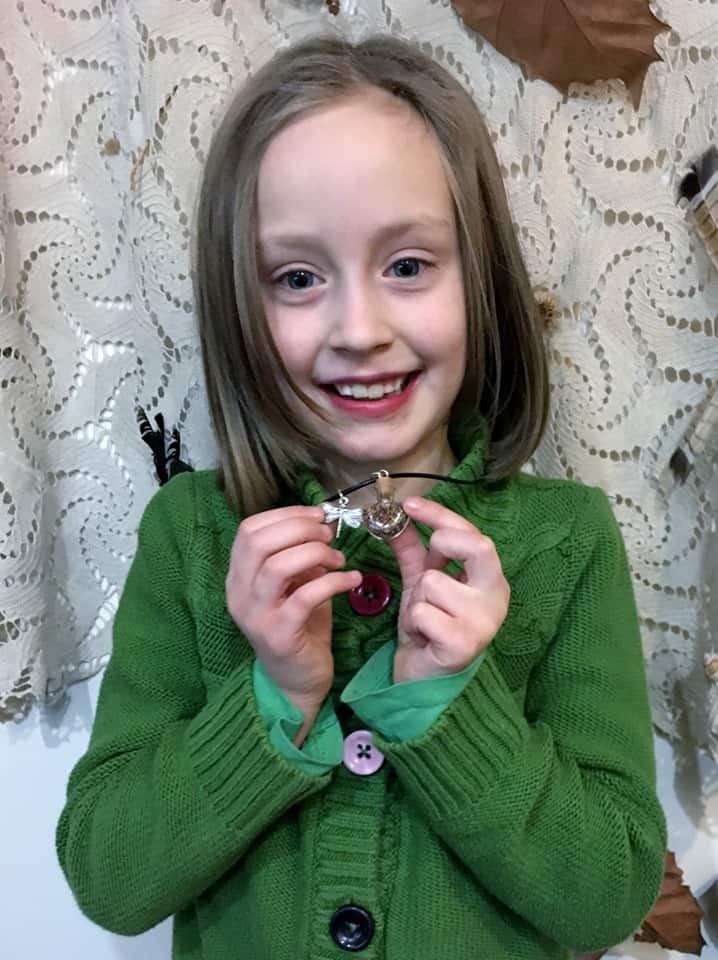 Eman invited Ron and other TPE members to Sigma Xi’s Annual Meeting and Student Research Conference at the Monona Terrace Community and Convention Center on November 14–17, 2019, in Madison, Wisconsin. With the theme of Our Changing Global Environment: Scientists and Engineers Designing Solutions for the Future, the meeting is an opportunity for scientists and science supporters to learn about emerging research related to environmental changes.
Eman invited Ron and other TPE members to Sigma Xi’s Annual Meeting and Student Research Conference at the Monona Terrace Community and Convention Center on November 14–17, 2019, in Madison, Wisconsin. With the theme of Our Changing Global Environment: Scientists and Engineers Designing Solutions for the Future, the meeting is an opportunity for scientists and science supporters to learn about emerging research related to environmental changes.
Sessions are organized by tracks about sustaining water resources, human health, and energy. Other tracks focus on how to best communicate science to the public and other stakeholders, research ethics, and professional development for scientists and engineers. Here is the full schedule.
A group registration discount of up to 25 percent is available to TPE chapters and members. For more information on the group discount, please contact meetings@sigmaxi.org. A one-day pass for non-Sigma Xi members on November 15 or November 16 costs $175 and the full conference is $400.
Sessions include:
The challenges of presenting global environmental problems such as climate change to specific audiences who do not perceive these impacts or are facing more “immediate” concerns, such as economic hardship
A free and public STEM Art and Film Festival from 9 a.m. to 4 p.m. on November 17 at Monona Terrace will be the final event of the conference. The festival features more than 10 documentaries, short films, and animations as well as 30 pieces of art relating to science, technology, engineering, and math (STEM). 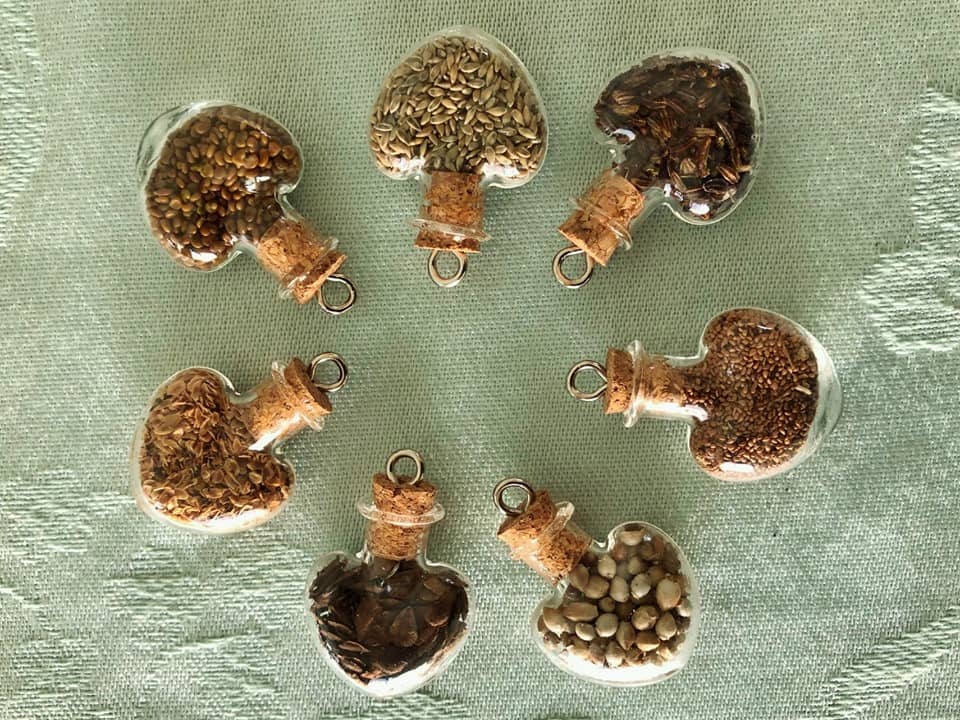
Ron will represent TPE with an exhibit table throughout the conference and sell native seed necklaces, which he makes for people to wear as a symbol for their support of prairies and savannas.
“The carbon sequestration ability of prairies can play a role in curbing climate change,” states Ron’s card that each customer receives with a necklace.
Ron donates his time, materials, and 100 percent of the sales from the necklaces to TPE to help protect prairies.
“The necklaces have become a good vehicle for outreach and education,” he said.
For more information about the Sigma Xi Annual Meeting and Student Research Conference, contact event organizers at meetings@sigmaxi.org.
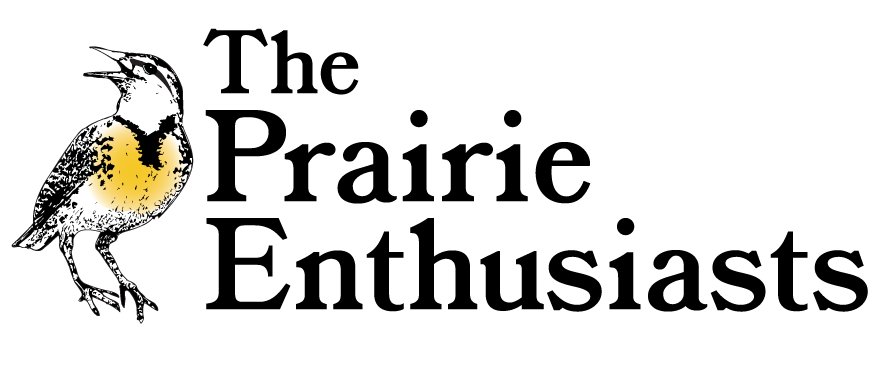






 In the fall, Jim and Rickie Rachuy planted the seed from the one green milkweed pod in their rare species garden and grew 24 seedlings. Then Duane Ambroz, Illinois Department of Natural Resources (IDNR) heritage biologist, visited this remnant twice and determined it to be a grade three abandoned pasture/gravel hill remnant prairie. He found two types of Spiranthes orchids or lady’s tresses during his visits and since then, we have identified 30 grasses and forbs at that location.
In the fall, Jim and Rickie Rachuy planted the seed from the one green milkweed pod in their rare species garden and grew 24 seedlings. Then Duane Ambroz, Illinois Department of Natural Resources (IDNR) heritage biologist, visited this remnant twice and determined it to be a grade three abandoned pasture/gravel hill remnant prairie. He found two types of Spiranthes orchids or lady’s tresses during his visits and since then, we have identified 30 grasses and forbs at that location.
 We formed a Lake Carroll Prairie Club in September 2018 to recruit Lake Members’ help. Our mission statement is “To preserve and maintain the prairies and woodlands of Lake Carroll to improve the quality of the community’s ecosystem.” We currently have 35 members and hold monthly meetings and write Lake newsletter articles to educate the community on the benefits and beauty of these prairies. We post the emerging forbs or insect discoveries along with an educational text on the Lake’s Facebook page.
We formed a Lake Carroll Prairie Club in September 2018 to recruit Lake Members’ help. Our mission statement is “To preserve and maintain the prairies and woodlands of Lake Carroll to improve the quality of the community’s ecosystem.” We currently have 35 members and hold monthly meetings and write Lake newsletter articles to educate the community on the benefits and beauty of these prairies. We post the emerging forbs or insect discoveries along with an educational text on the Lake’s Facebook page. 
 What do TPE member and emeritus professor Tom Brock have in common with rock-n-roll star Steve Miller? In addition to never hearing of the other, they both were awarded Honorary Doctorate degrees from UW-Madison in May.
What do TPE member and emeritus professor Tom Brock have in common with rock-n-roll star Steve Miller? In addition to never hearing of the other, they both were awarded Honorary Doctorate degrees from UW-Madison in May. They went all in starting in 1997, going so far as to hire the town of Vermont crew for a week to remove trees along the south slope below a prairie remnant (still referred to as Kathie’s Prairie). They also had their first prescribed burn that year and hired some additional help. Soon after, in 1999, they hired Paul Michler and myself to cut and treat buckthorn. Our equipment in those days was marginal – one small Stihl brush cutter, a spray bottle of Roundup and a Geo Tracker – all borrowed from the Brocks.
They went all in starting in 1997, going so far as to hire the town of Vermont crew for a week to remove trees along the south slope below a prairie remnant (still referred to as Kathie’s Prairie). They also had their first prescribed burn that year and hired some additional help. Soon after, in 1999, they hired Paul Michler and myself to cut and treat buckthorn. Our equipment in those days was marginal – one small Stihl brush cutter, a spray bottle of Roundup and a Geo Tracker – all borrowed from the Brocks. A geology professor was invited to come out to describe the geology. Once most of the invasive trees were removed, all trees over 10 inches DBH (a forestry term describing diameter at breast height) were tagged and geolocated. Over 4,000 trees were mapped this way and data entered as tosize, species and whether dead or alive. This data was useful in showing the extent of bur oak blight at PVC Tom reported in the April 2018 edition of The Prairie Promoter.
A geology professor was invited to come out to describe the geology. Once most of the invasive trees were removed, all trees over 10 inches DBH (a forestry term describing diameter at breast height) were tagged and geolocated. Over 4,000 trees were mapped this way and data entered as tosize, species and whether dead or alive. This data was useful in showing the extent of bur oak blight at PVC Tom reported in the April 2018 edition of The Prairie Promoter. They’ve collected and/ or traded seeds with Goose Pond (Madison Audubon), Swamplovers and others. The result is a fabulous example of oak savanna (with added birches), remnant goat prairie, wetland, restored prairie and oak woodlands. The property was dedicated a State Natural Area on June 6, 2008. While Tom and Kathie received some money from grants, they paid for this beautiful restoration project essentially with their own money from which we all benefit and are grateful.
They’ve collected and/ or traded seeds with Goose Pond (Madison Audubon), Swamplovers and others. The result is a fabulous example of oak savanna (with added birches), remnant goat prairie, wetland, restored prairie and oak woodlands. The property was dedicated a State Natural Area on June 6, 2008. While Tom and Kathie received some money from grants, they paid for this beautiful restoration project essentially with their own money from which we all benefit and are grateful.
 Eman invited Ron and other TPE members to Sigma Xi’s
Eman invited Ron and other TPE members to Sigma Xi’s 